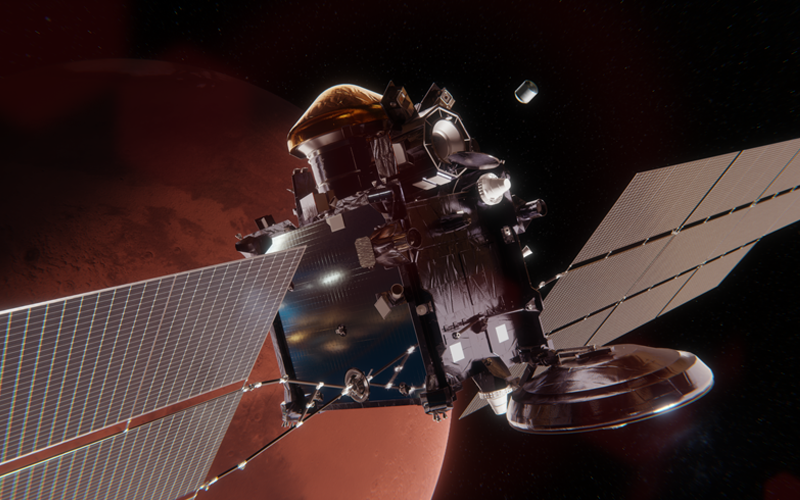
The European Space Agency announced on 5 July that its Earth Return Orbiter had passed a key milestone with the completion of its critical design review.
ESA’s Earth Return Orbiter (ERO) is the agency’s primary contribution to NASA’s Mars Sample Return mission, which aims to bring soil, rock, and atmospheric samples from Mars back to Earth for analysis. Airbus Defence and Space was awarded the €491 million contract to design and build the orbiter back in October 2020.
Airbus announced that the ERO mission had passed a Preliminary Design Review in June 2021. At the time, the company set out a timeline that had a Critical Design Review completed two years later (2023), followed by the delivery of the completed spacecraft in 2025 and a launch in 2026. That timeline has, however, encountered challenges, the most recent of which saw NASA announce in April that it intended to update the mission’s scope to reduce complexity, risk, and cost. Despite these challenges, teams at ESA and Airbus have continued to push the development of the ERO mission forward.
“We have confirmed that the Earth Return Orbiter works for what was planned to do and more, whatever the alternatives are,” explained ERO project team leader Tiago Loureiro.
The completion of the Platform Critical Design Review (P-CDR) is a significant step forward in the mission’s development. The review confirmed the performance, quality, and reliability of the spacecraft’s systems, including the massive solar wings, which will give it a 38-metre wingspan. The next step of the ERO development process will include the integration and testing of the various components that make up the spacecraft.
Pinning a tail on a donkey orbiting a planet
After being launched aboard an Ariane 64 from the Guiana Space Centre, the seven-tonne ERO spacecraft will complete a five-year mission to the Red Planet and back. This journey will initially include the spacecraft entering into orbit around Mars and locating a basketball-sized capsule launched from the surface of a planet with a diameter of 6,790 kilometres. It will then need to maneuver into the precise orbit to rendezvous with the capsule, successfully capture it, escape from Mars orbit, and return to Earth. The samples will then be transported to Earth’s surface for recovery aboard the Earth Entry Vehicle. Finally, ERO will, after a successful mission, retire to a prime location in a stable orbit around the Sun.
“This mission exemplifies European technological prowess at its finest. From a staggering distance of up to several hundred million kilometres, Earth-based teams will choreograph a complex orbital dance around Mars,” explained ESA Mars programme manager Orson Sutherland.




